Physical Address
304 North Cardinal St.
Dorchester Center, MA 02124
Physical Address
304 North Cardinal St.
Dorchester Center, MA 02124
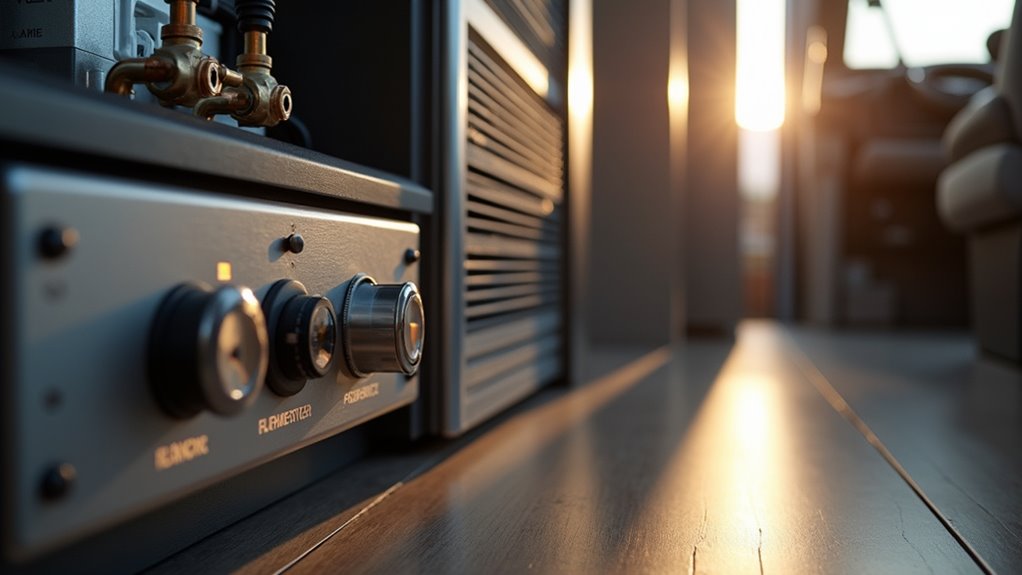
Getting your RV furnace running properly on battery, generator, or shore power could mean the difference between comfort and catastrophe.
Funny how you’re thinking about your RV furnace just as winter’s approaching and camping season’s winding down. You’ve got three power options to keep warm during those chilly nights – battery, generator, or 110-volt shore power – but each one requires different preparation and understanding. Getting it wrong could leave you shivering in your sleeping bag, while getting it right means cozy evenings regardless of what Mother Nature throws at you. Here’s what you need to know before you fire it up.
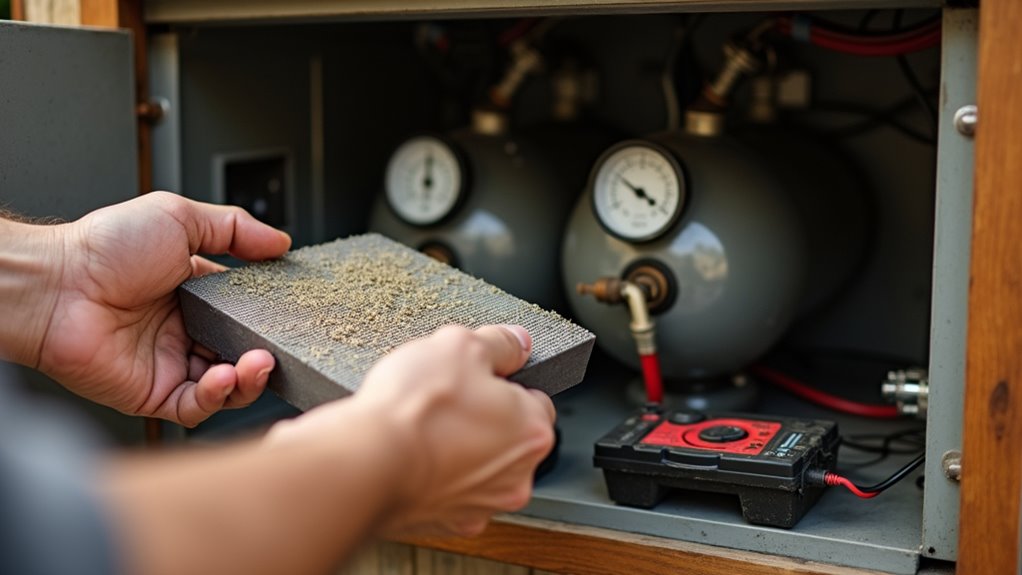
Before you fire up your RV furnace for the first time this season, you’ll need to complete several critical preparation steps that guarantee both safe operation and peak performance.
Start by checking your RV’s battery to verify it’s fully charged and can support the furnace’s electrical demands. Verify your generator’s working properly if you’re not using shore power, and confirm all circuit breakers are reset and functional.
Next, test your carbon monoxide detector and inspect all propane lines for leaks using soapy water. Clear any debris from furnace vents and verify your fire extinguisher’s easily accessible. Remember that small issues can quickly escalate into significant problems if left unaddressed during the heating season.
Conduct a thorough furnace inspection, checking the heat exchanger for corrosion and verifying the blower motor operates smoothly. Finally, confirm your thermostat settings match current conditions.
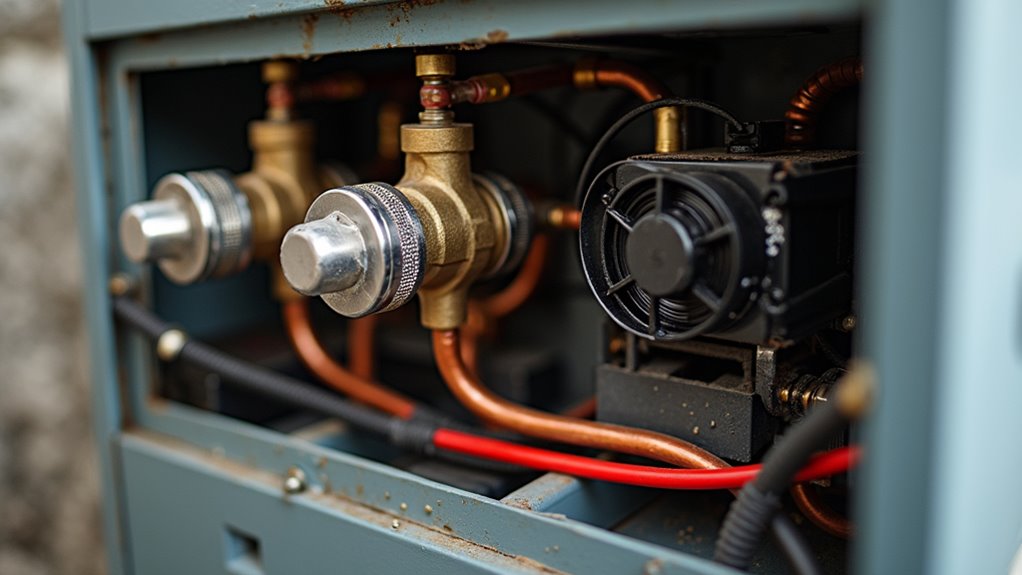
Now that you’ve completed your pre-startup checks, you’ll want to understand exactly how your RV furnace operates to troubleshoot issues and maintain it properly.
Your furnace uses propane for heat generation and DC power for the blower fan, even when connected to shore power. The burner assembly ignites propane while the heat exchanger transfers warmth to circulating air without mixing combustion gases with cabin air.
RV furnaces rely on propane for heat and DC power for air circulation, keeping combustion gases safely separated from your living space.
Two critical safety switches protect you: the sail switch prevents ignition unless the blower’s running at proper speed, and the limit switch shuts off the burner if temperatures get too high.
When your thermostat calls for heat, the control board starts the ignition sequence, then the blower circulates heated air through ducts or directly into your living space. If ignition fails multiple times, the system enters a lockout mode to prevent further attempts and ensure safe operation.
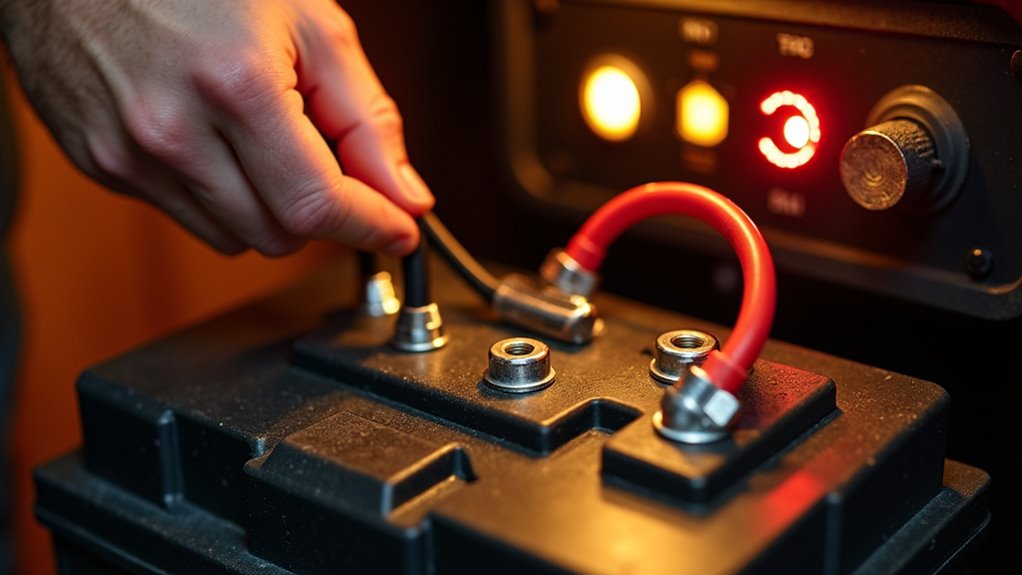
When you’re camping off-grid or experiencing a power outage, your RV furnace becomes entirely dependent on your battery system for operation.
Your furnace will draw 100-150 watts of power, which translates to roughly 7.6 amps from your 12-volt battery system. This means a standard 100Ah lead-acid battery can power your furnace for about 6.5 hours, since you should only use half of its capacity to preserve battery life.
Cold weather increases power consumption, reducing runtime considerably. If you’re running other appliances simultaneously, expect even shorter operating times. Insufficient battery power may prevent your furnace from starting up entirely, as the system requires adequate voltage for both the ignition sequence and fan operation.
Monitor your battery levels closely—letting them drop below 50% damages their long-term capacity. Consider backup heating options like portable propane heaters, and always have a charging method available, whether through generators or solar panels.
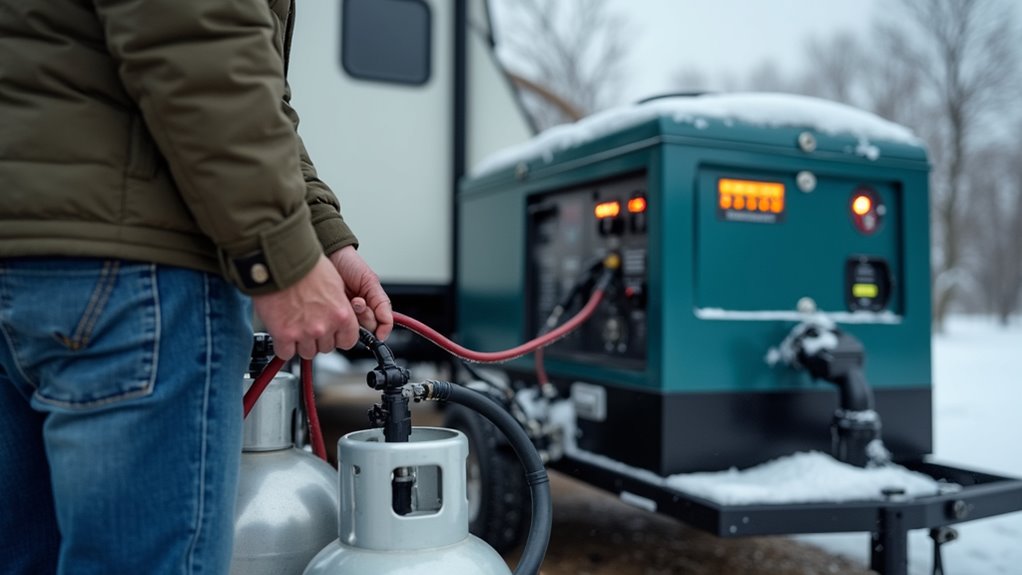
While your RV’s generator provides much greater power capacity than batteries alone, it still requires careful coordination with your furnace system to secure reliable heating.
Your generator supplies 30 or 50 amp AC power, typically ranging from 2,500 to 12,500 watts, which runs your converter to power the furnace’s 12V DC components.
RV generators deliver substantial 30-50 amp AC power that converts to 12V DC current for reliable furnace operation.
Before starting, confirm propane valves are open, the generator has adequate fuel, and all vents are clear.
Turn off large loads like air conditioners, then start your generator and let it stabilize for a few minutes. Allow the generator periodic breaks to cool down during extended heating periods, as continuous operation can stress the system even though it will run as long as fuel and air intake are available.
Set your thermostat and monitor for proper blower and burner operation.
If issues arise, check your fuse panel, DC voltage supply, and reset the thermostat if ignition fails.
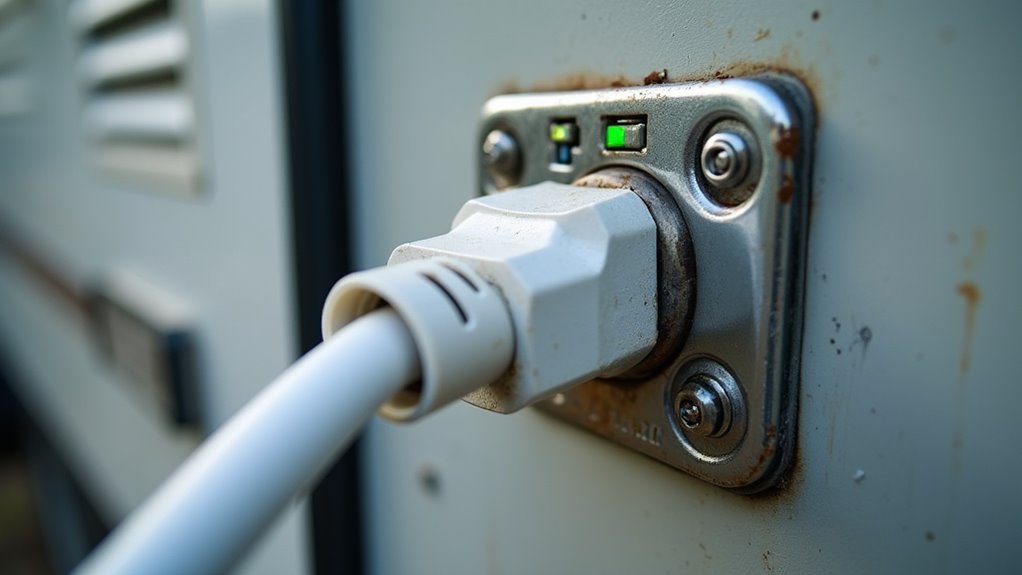
Shore power offers the most stable and convenient way to operate your RV furnace during extended stays at campgrounds or RV parks.
When you plug into a 30 or 50 amp shore power connection, your converter transforms the 120-volt AC into 12-volt DC power that your furnace needs to run. This setup eliminates concerns about battery drain while providing consistent power for extended heating periods.
Your converter only operates when connected to shore power or a generator, so you’ll have reliable 12-volt power as long as you’re plugged in. To reduce propane consumption on cold nights, consider using electric heaters as supplemental heat sources alongside your furnace.
Remember that your furnace still requires LP gas regardless of the electrical source. It’s also important to periodically inspect your electrical system to ensure safe operation and prevent overloads.
Check your 120-volt breaker panel inside the RV if you experience power issues, and verify your electrical system isn’t overloaded by other high-draw appliances.

Although your RV furnace provides reliable warmth during cold weather adventures, it requires careful attention to safety protocols and regular maintenance to operate effectively.
While RV furnaces deliver dependable heating for winter travels, they demand strict safety measures and consistent upkeep to function properly.
You’ll need to regularly check for propane leaks using gas leak detectors and install a carbon monoxide detector inside your RV. Keep exterior intake and exhaust vents unobstructed, and maintain your battery voltage between 10.5 and 13.5 volts DC for proper operation.
Clear the area around your furnace of flammable materials and inspect floor registers for blockages. Use compressed air to clean dust from the burn chamber, and examine ductwork for kinks or tears. Pay special attention to monthly vacuuming of the return air compartment to prevent dust and debris accumulation that can interfere with proper operation.
Schedule annual professional inspections for thorough cleaning and component replacement. Never use open flames when checking for leaks, and always know your propane shutoff location for emergencies.

Even with proper maintenance and safety protocols in place, your RV furnace can still encounter operational issues that’ll leave you cold and frustrated.
When your furnace won’t start, first check that your thermostat’s set to “Heat” and verify your 12V battery has sufficient charge. Inspect your fuse panel for blown furnace fuses and examine all wiring connections for corrosion or looseness.
If your blower runs but there’s no ignition, listen for clicking sounds and check for gas smell at the exhaust. Cold weather can cause propane regulators to malfunction, so try warming them with a heat lamp. The absence of a click indicates that a safety feature has activated to prevent unsafe operation.
Frequent cycling often indicates drafts near your thermostat or blocked air vents. Clear any obstructions from floor registers and confirm ducts aren’t blowing directly onto your thermostat.
You’ve now mastered the art of keeping your mobile home cozy, whether you’re drawing from your house batteries, firing up your portable power plant, or plugging into civilization’s grid. Remember, your heating companion isn’t just about staying warm—it’s about creating that perfect sanctuary on wheels. Keep those safety checks routine, don’t skimp on maintenance, and you’ll have reliable comfort wherever the road takes you. Stay toasty out there!